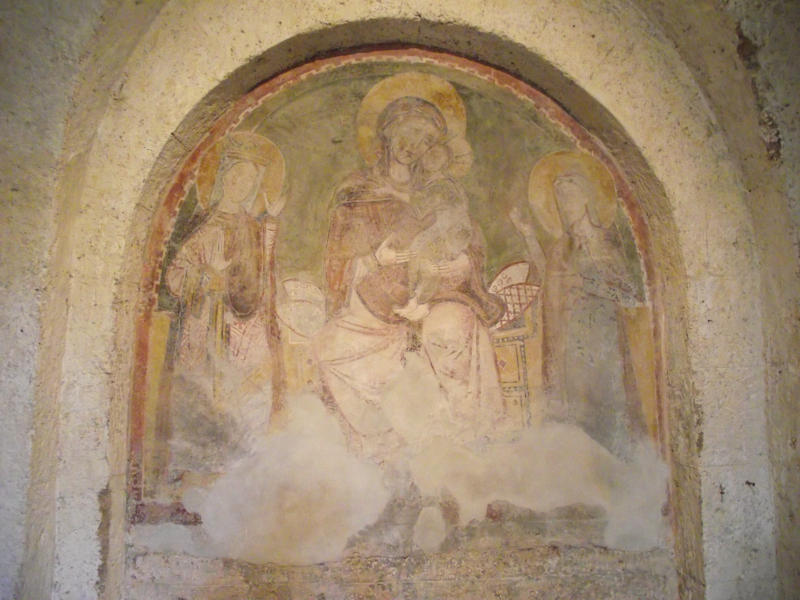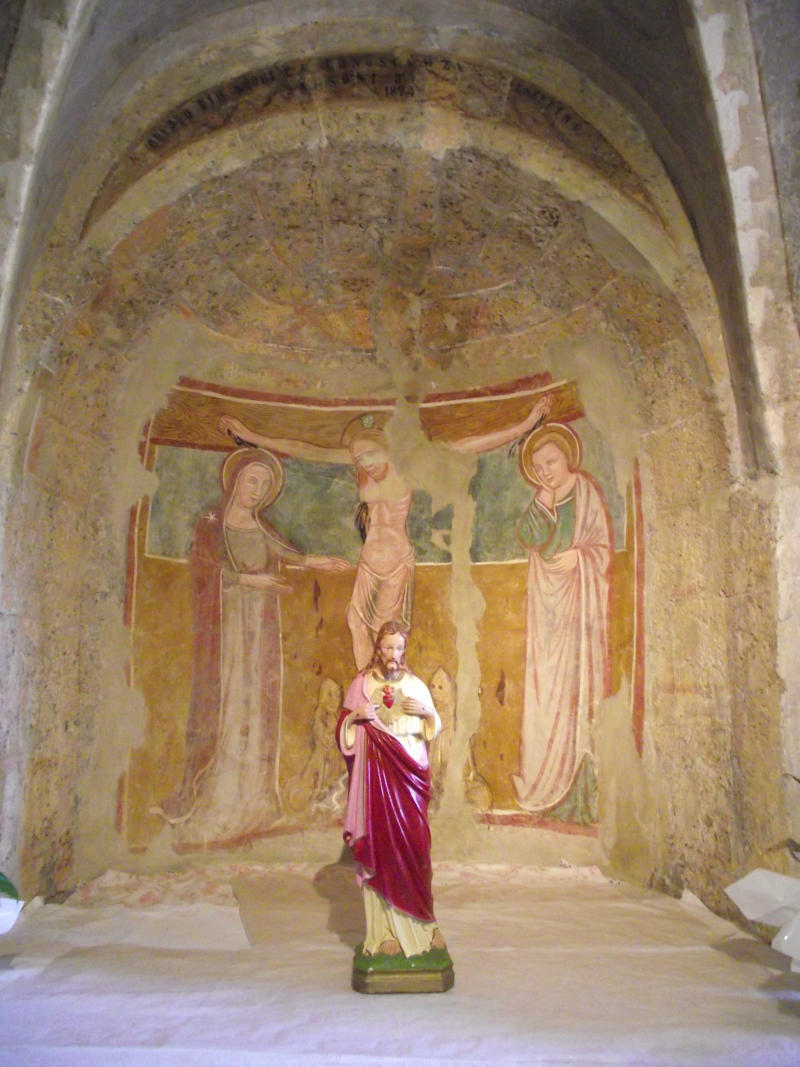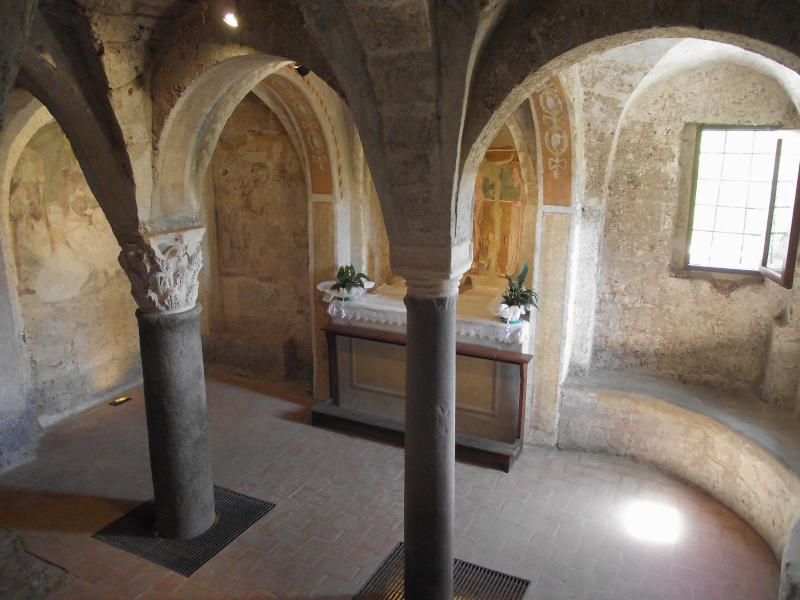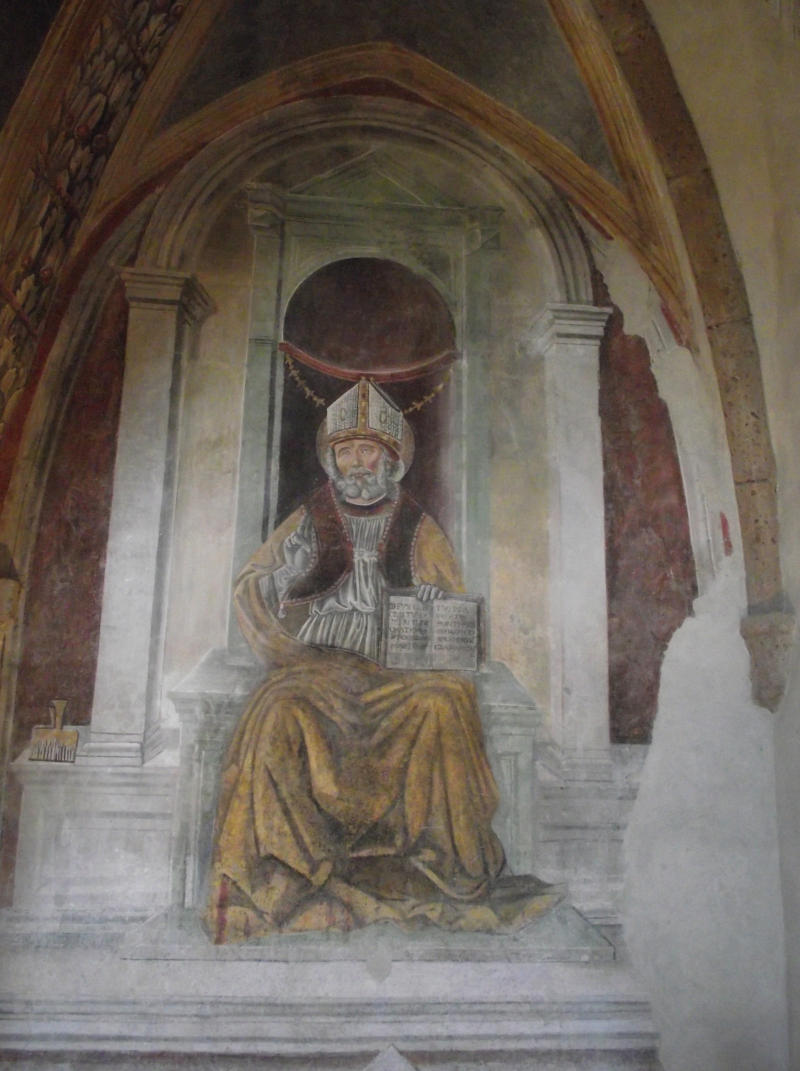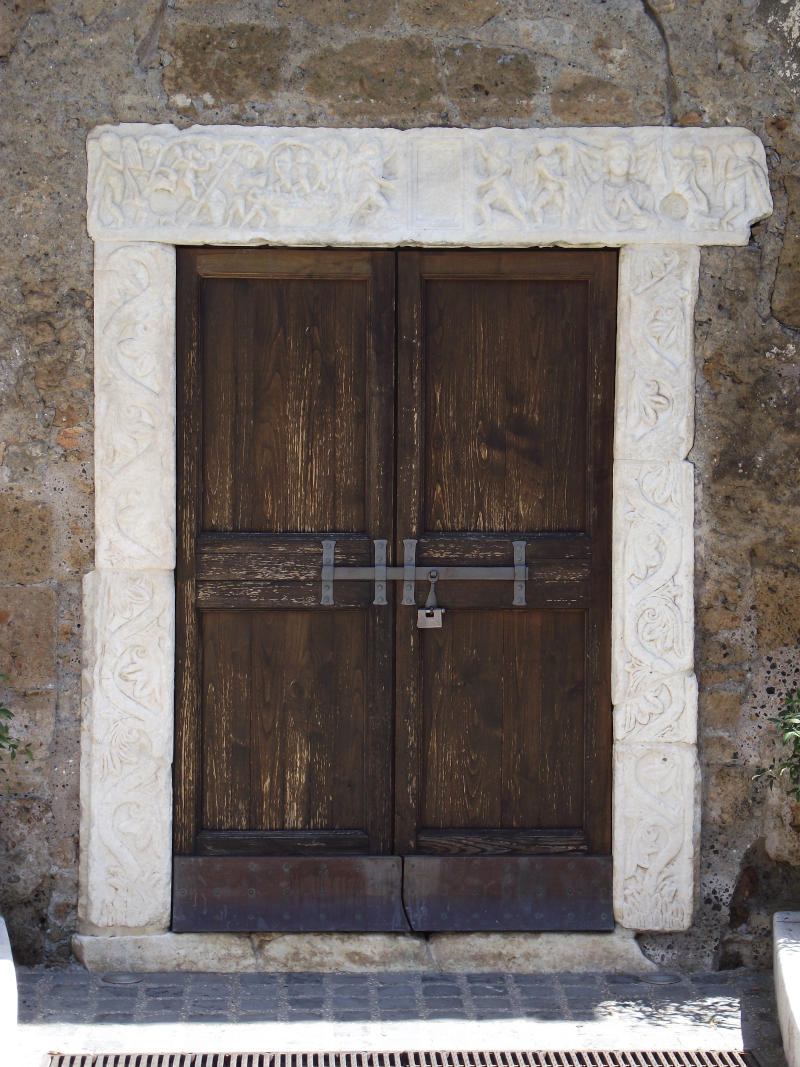The Church of Saint Biagio has been declared a monument of National Interest. It was probably built in the 10th century. Many frescos decorate its inside.
This church is first mentioned by a document dating back to 950 a.C., when the building was part of a benedictine architectural ensemble, which was occupied by cloistered nuns, controlled by Monastery of Saint Ciriaco located in Via Lata in Rome.
In 1560 the monastery was abolished and its structures annexed to the parish of Santa Croce.
The entrance is through a portal made up of bare material, including a Roman sarcophagus lid (3rd century AD) placed as an epistyle and medieval-era jambs decorated with racemes and palmettes. The church has a single hall. Inside, the different walls suggest different construction phases that have taken place since the 10th century. An evident expansion of the building took place during the 12th century, when the current raised presbytery was built above the crypt ad oratorium.
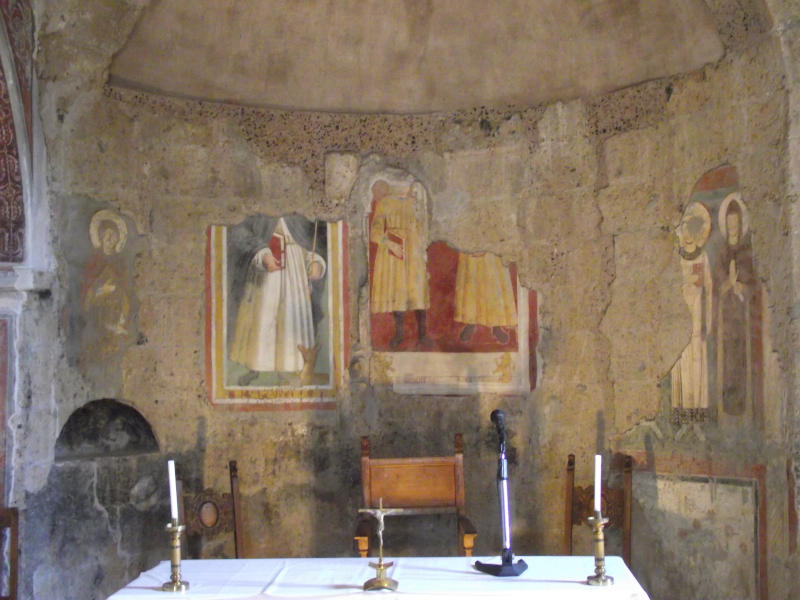
The apse shows frescos from different periods. The most ancients date back to the 12th century and depict the figures of two saints, probably Saint Benedetto and Saint Lorenzo. The frescos portraying the figures of Saint Egidio, Saint Abdon and Saint Sennen at the center of the apse were realized later, probably when the ciborium next to the presbytery was built.
The ciborium presents a rib vault with ogival curves and it lays on a little column. Under the vault there is the portrait of Saint Biagio and the epigraph displaying the year of realization: 1490.
Above the column the figure of Saint Sebastian is on the top of an emblem depicting a sow and an oak branch, which is the emblem of the University of the Pigs’ Merchants. The emblem probably indicates the commissioner of the ciborium, a rich corporation who owned hog farms in the countryside outside Nepi.
Below the presbytery there is a three naves crypt decorated with a 13th century fresco illustrating the Virgin Mary with her child Jesus on a throne.
Information
- Address
- Piazza San Biagio n. 11
- Opening Hours
- Opening on request for guided tours


